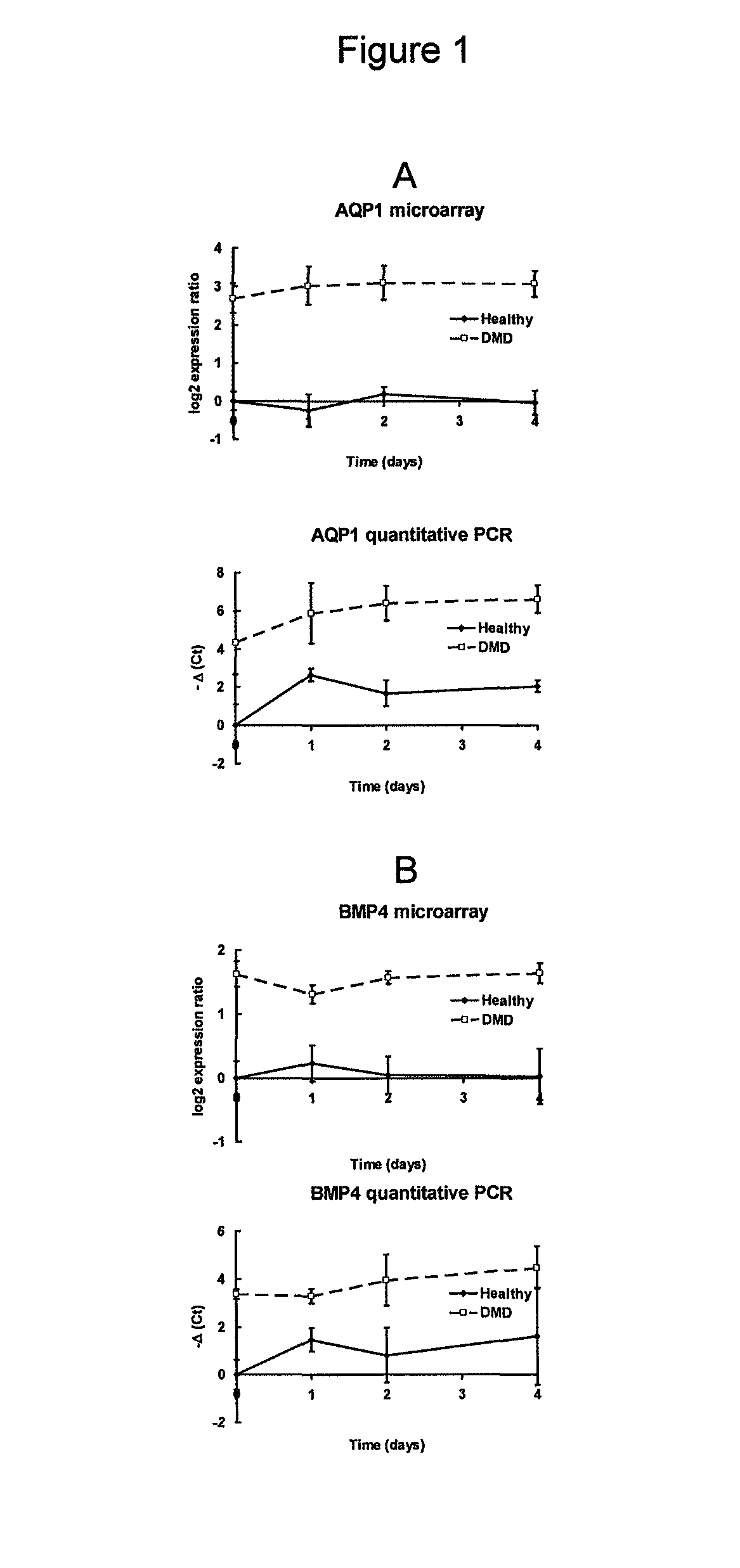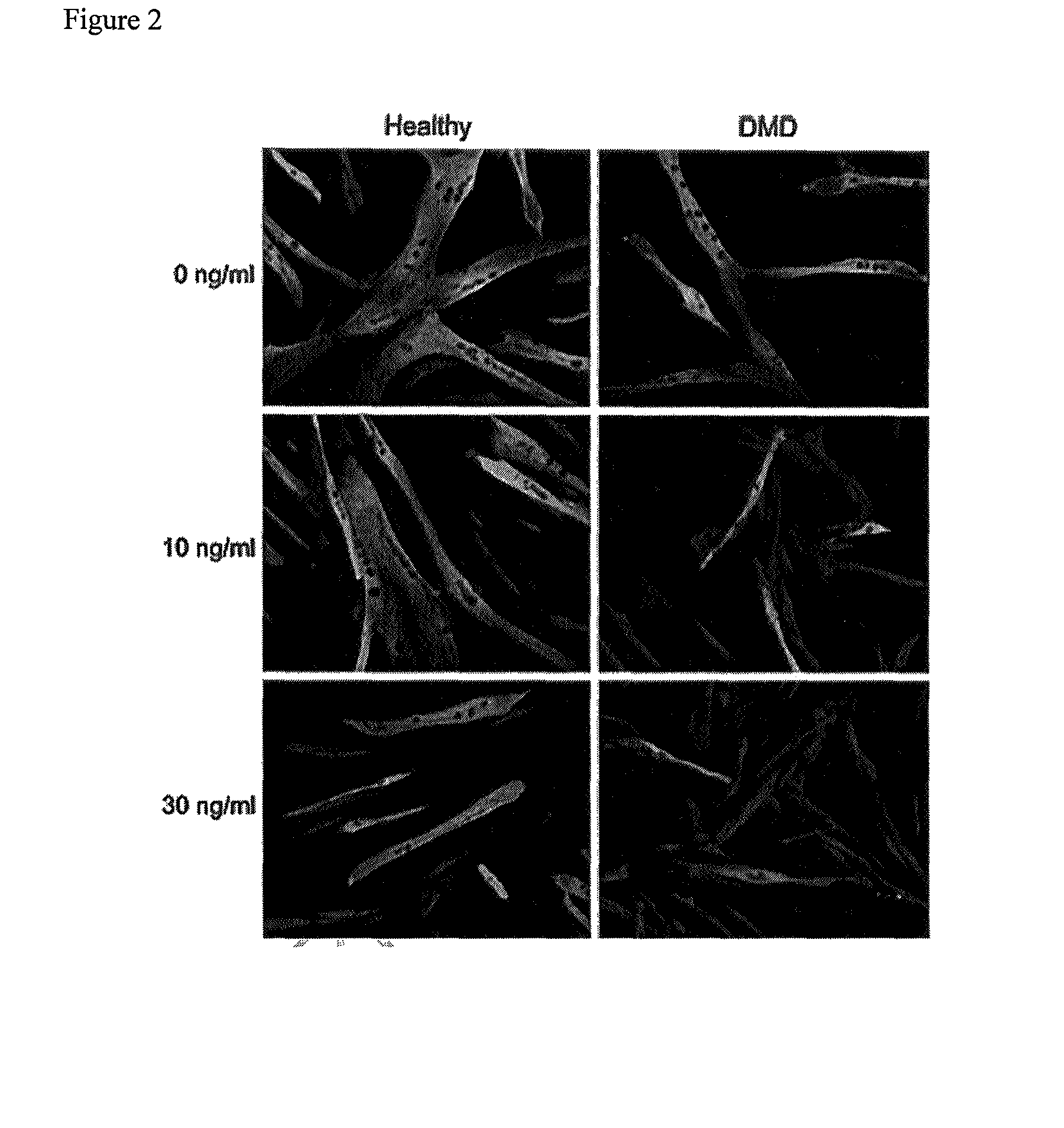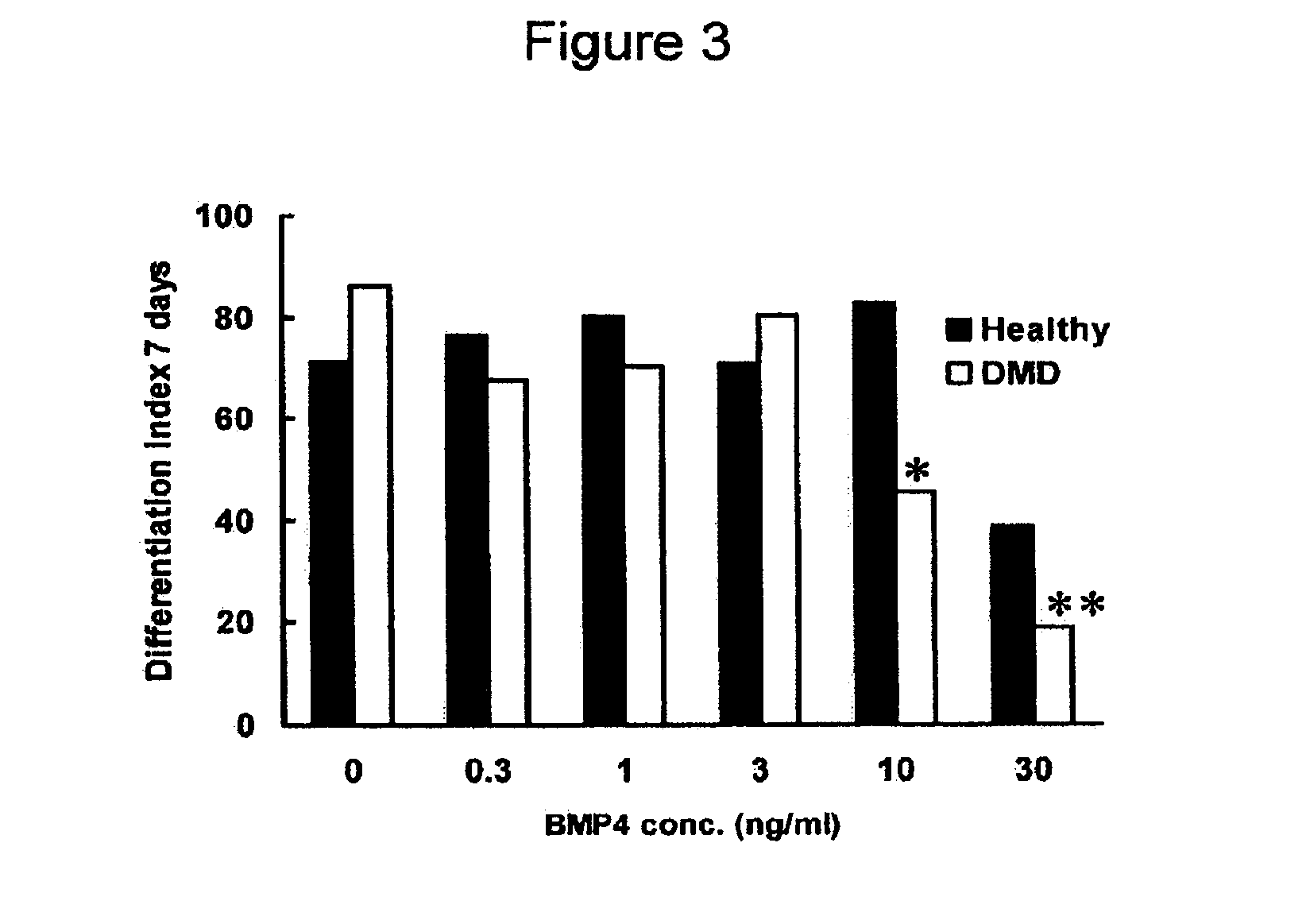Therapeutic intervention in a genetic disease in an individual by modifying expression of an aberrantly or abnormally expressed gene
- Summary
- Abstract
- Description
- Claims
- Application Information
AI Technical Summary
Benefits of technology
Problems solved by technology
Method used
Image
Examples
example 1
Material and Methods
Cell Culture
[0059]Primary human myoblasts were isolated from skeletal muscle biopsies [42] of three healthy individuals (KM109, KM108 and HPP4) and three DMD patients (DL589.2 [exon 51-55 deletion], DL470.2 [exon 46-50 deletion] and 50685.1[exon 48-50 deletion])[42;43]. The age at time of biopsy varied from 2-14 years. The cultures consist of myoblasts and other cell types that were present in the original biopsy. The proportion of myoblasts was determined for each biopsy by desmin staining and cell counting as described[44]. Healthy and DMD cultures did not differ in the average percentage of myoblasts (57±20%). Cells were grown in proliferation medium in collagen-coated culture flasks. When cells were 80% confluent, differentiation was initiated by replacing the high-serum medium with low-serum medium[27]. All cell cultures used for the experiments had passage numbers between 4 and 10.
cDNA Hybridization
[0060]cDNA microarrays containing 4417 muscle-related genes...
example 2
Downregulation of BMP4 Expression in Duchenne Myoblasts by Exon Skipping AONs
[0070]Human myoblasts, isolated from a skeletal muscle biopsy of a Duchenne patient (DL589.2) were proliferated in 6-well dishes to a confluency of 50% (for details see example 1). Twenty four hours before transfection, cells were put on low-serum differentiation medium. Cells were transfected with the AONs (2′-O-methyl phosphorothioate) mentioned below, at a concentration of 100, 200, or 500 nM, or left untreated:
AON Sequences
[0071]
hBMP4-#1:5′ gca ugg cuc gcg ccu ccu agc ag 3′(SEQ ID NO: 1)hBMP4-#2:5′ cca gug cug ugg auc ugc ucu u 3′(SEQ ID NO: 2)FAM-AON:5′-FAM-cuu cca cau ccg guu guu u 3′(SEQ ID NO: 3)
[0072]The first two oligonucleotides are designed against exon internal sequences in exon 4 of human BMP4, transcript variant 1 (NM—001202). The last oligonucleotide is a control oligonucleotide which should not affect BMP4 expression, and contains a 5′ FAM-label to allow fluorescent detection of oligonucleo...
example 3
Antisense Against BMP4 and DMD Exon Skipping Antisense Sequences in Mdx x Utrophin − / − Mice; Evaluation of Muscle Strength, Survival, Protein and RNA Levels
[0078]Dystrophin and utrophin-deficient mice (mdx.utrn− / − mice) were generated by crossing of male mdx + / o.utrn− / −.hDMD+ / −mice female mdx+ / +.utrn− / −.hDMD+ / − ('t Hoen et al, manuscript in preparation). Mice were housed under standard laboratory conditions. Animals were fed regular chow and had access to drinking water ad libitu,. 20-mer 2′-O-methyl phosphorothioate ribonucleic acids were synthesized by Eurogentec. The antisense sequences were targeted against
[0079]1. the exon 23-intron 23 boundary of the murine Dmd gene, sequence AON-1: GGCCAAACCUCGGCUUACCU (SEQ ID No: 9).
[0080]The sequence of this AON is identical to the AON used by Mann et al, and Lu et al, in their experiments in mdx mice and results in efficient skipping of the mutated exon 23 of the Dmd gene, resulting in production of functional dystrophin protein [31; 52].
[...
PUM
| Property | Measurement | Unit |
|---|---|---|
| temperature | aaaaa | aaaaa |
| concentrations | aaaaa | aaaaa |
| concentrations | aaaaa | aaaaa |
Abstract
Description
Claims
Application Information
 Login to View More
Login to View More - R&D
- Intellectual Property
- Life Sciences
- Materials
- Tech Scout
- Unparalleled Data Quality
- Higher Quality Content
- 60% Fewer Hallucinations
Browse by: Latest US Patents, China's latest patents, Technical Efficacy Thesaurus, Application Domain, Technology Topic, Popular Technical Reports.
© 2025 PatSnap. All rights reserved.Legal|Privacy policy|Modern Slavery Act Transparency Statement|Sitemap|About US| Contact US: help@patsnap.com



